Paper mill investigations are best left to professionals. But who are the real professionals? And who are the real bandwagoning grifters?
Truth is, Smut Clyde and his colleagues Tiger BB8, Elisabeth Bik, Morty and Cheshire have done a great damage to the scientific publishing business. Respectable journals, issued by respectable scholarly publishers and learned societies proved to be nothing but trash bins for Chinese papermills, where editorial gatekeeping and peer review failed many hundred-fold while the journal managers were eagerly cashing in on the Open Access fees from their fraudster customers.
This even raises the question how trustworthy the un-retracted rest in those same failed journals is. If nobody checks even the crap which the Chinese papermills submit on a conveyor belt, how can we know if anyone checks these journals’ “western” submissions?
Basically, it would not be good at all if the public found out that the scholarly publishing, both commercial and non-profit, is not really the apex of academic wisdom and scientific knowledge you can blindly and literally trust with your life, but a business with ethics and priorities not much better than those of the cigarette industry. What if the public finds out that a big chunk of published scientific literature consists of bunk, trash and fraud, where even utterly fabricated forgeries from papermills are treated as real peer-reviewed science? Will the public still pay for Open Access and subscriptions?
Uh-uh.
The making of superheroes
Something needed to be done about those papermill leaks, pronto. Obviously one could not do nothing. So the publishers and editors eventually began to mass-retract some of the mill products, in most retraction notices and editorials they credited their own investigations, simply to defend their own respectability. But because this is academic publishing, they needed references. Occasionally, Elisabeth Bik gets credited, she (quite deservingly!) became a celebrity whom even publishers can’t ignore anymore (they still don’t invite Elisabeth to their research integrity conferences).
But how convenient that an Australian oncology professor and a German editorial assistant on image integrity wrote some peer reviewed papers about papermills. Now the whole world believes that the investigative work, originally done by Smut Clyde et al, was actually and in reality done by Jennifer Byrne and Jana Christopher, admittedly assisted by Bik. Science magazine started this practice already in early 2020, when their author Dalmeet S Chawla wrote:
“Elisabeth Bik, a microbiologist–turned–research integrity expert based in San Francisco, along with other “forensic detectives,” identified the potentially problematic papers, which they think came from a single source.”
The link to “other “forensic detectives”” goes to a Byrne & Christopher paper in FEBS Letters, published after the investigation by Smut Clyde, Bik et al appeared on my site. Since then, Byrne & Christopher get by default credited for uncovering over 600 (!) fabrications by that one single papermill, and they never seem to even try to set the record straight.
Bik’s own February 2020 blogpost about this paper mill, which Science even referenced, duly credits her colleagues and links to the article on my site:
“As it turns out, Byrne and Christopher’s publication describes the exact same set of papers that our small team of image forensics detectives had been working on in the past month. While they show results from 17 unrelated manuscripts, our team, consisting of Smut Clyde, Morty, Tiger, and me has found about 400 papers so far. You can find the (still growing) list of papers here.
As described by Smut Clyde on Leonid Schneider’s blog For Better Science in a blog post called ‘The full-service paper mill and its Chinese customers‘ the background similarities between Western blot panels were first noticed by pseudonymous PubPeer user Indigofera Tanganyikensis in two PubPeer posts here and here.”
But this didn’t fit the desired narrative of the grand Byrne & Christopher discovery of (at that time) 400 papermill forgeries, this is why Science Editor-in-Chief Holden Thorp seemed convinced I stole and reverse-plagiarised their the duo’s achievements using a demonic time-warp device. Even the existence of a dated Google sheet file by Smut Clyde didn’t convince him. Thorp sternly told me:
“Our reporters stand by their story and their reporting, and they have my support. I realize you don’t agree with that….”
Thing is, Thorp and all the other editors you will meet in this article know perfectly well that the work done actually by Smut Clyde et al. But they don’t like this fact because they despise us, for how we keep exposing the inside rottenness and greed of the scholarly publishing, even that by non-profit learned societies. Bik is the only sleuth who is not anonymous, so they had to credit her somehow. But never the others. And never For Better Science, because reasons.
As you will see, the editors and publishers may hate us, but they do rely on our work. They use For Better Science all the time, almost never crediting my anonymous colleagues, and sometimes the academic editors attribute their work directly to themselves. As Professor Heather Smith did, whom you will meet later in this article.
Elsevier developed a very twisted way to credit Bik while actually crediting Christopher in its retraction notices for papermill forgeries:
“This article has been retracted at the request of the Editor-in-Chief […] Given the comments of Dr Elisabeth Bik regarding this article “As previously described by Christopher …, the Western blot bands in all 400+ papers are all very regularly spaced and have a smooth appearance in the shape of a dumbbell or tadpole, without any of the usual smudges or stains”, the journal requested the authors to provide the raw data.”
Yet the actual PubPeer comment on that mill paper by a certain Hoya Camphorifolia went:
“If I may plagiarise Elisabeth M. Bik:
The Western blots and other figures in this paper have an interesting layout that appears to be shared with many other papers, as discussed in a January 2020 post on Leonid Schneider’s blog: https://forbetterscience.com/2020/01/24/the-full-service-paper-mill-and-its-chinese-customers/
The list of these papers is available here: https://docs.google.com/spreadsheets/d/1KXqTAyl4j-jVorFPMD2XRpr76LcIKJ0CVyIvRj0exYQ/edit?usp=sharing“
Of course Elsevier downloaded Smut Clyde’s spreadsheet. Of course they read For Better Science as their source. But they will never admit it, even if the hell freezes over.

Wiley is grateful
Once, Wiley publicly thanked Smut Clyde, Tiger BB8, Morty and Bik on Twitter:
Problem was, the linked publisher editorial by Chris Graf, Director of Research Integrity at Wiley, thanked someone else:
“And we are grateful for readers who take time to alert us to potential problems, including Elisabeth Bik from Science Integrity Digest and others, and Jennifer Byrne and Jana Christopher whose work is described here.”
Unless Wiley meant to reveal than Byrne is really Smut Clyde and Christopher is really Tiger BB8, this acknowledgment makes absolutely no sense whatsoever.
In this regard, in May 2021 Smut Clyde found a papermill product in Christopher’s own journal FEBS Letters, which is published by Wiley and run by a learned society in Germany. Here it is, Yan et al FEBS Letters 2014, (also on PubPeer).
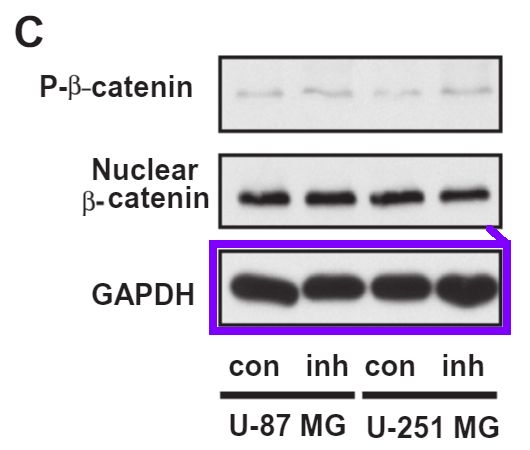
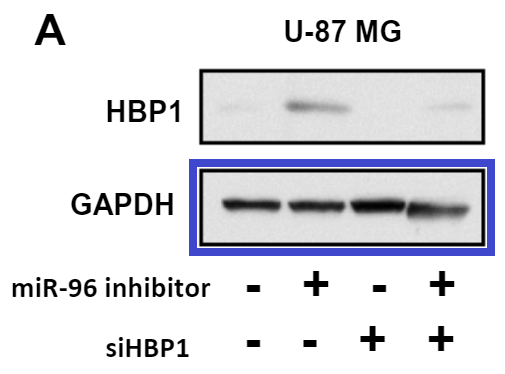
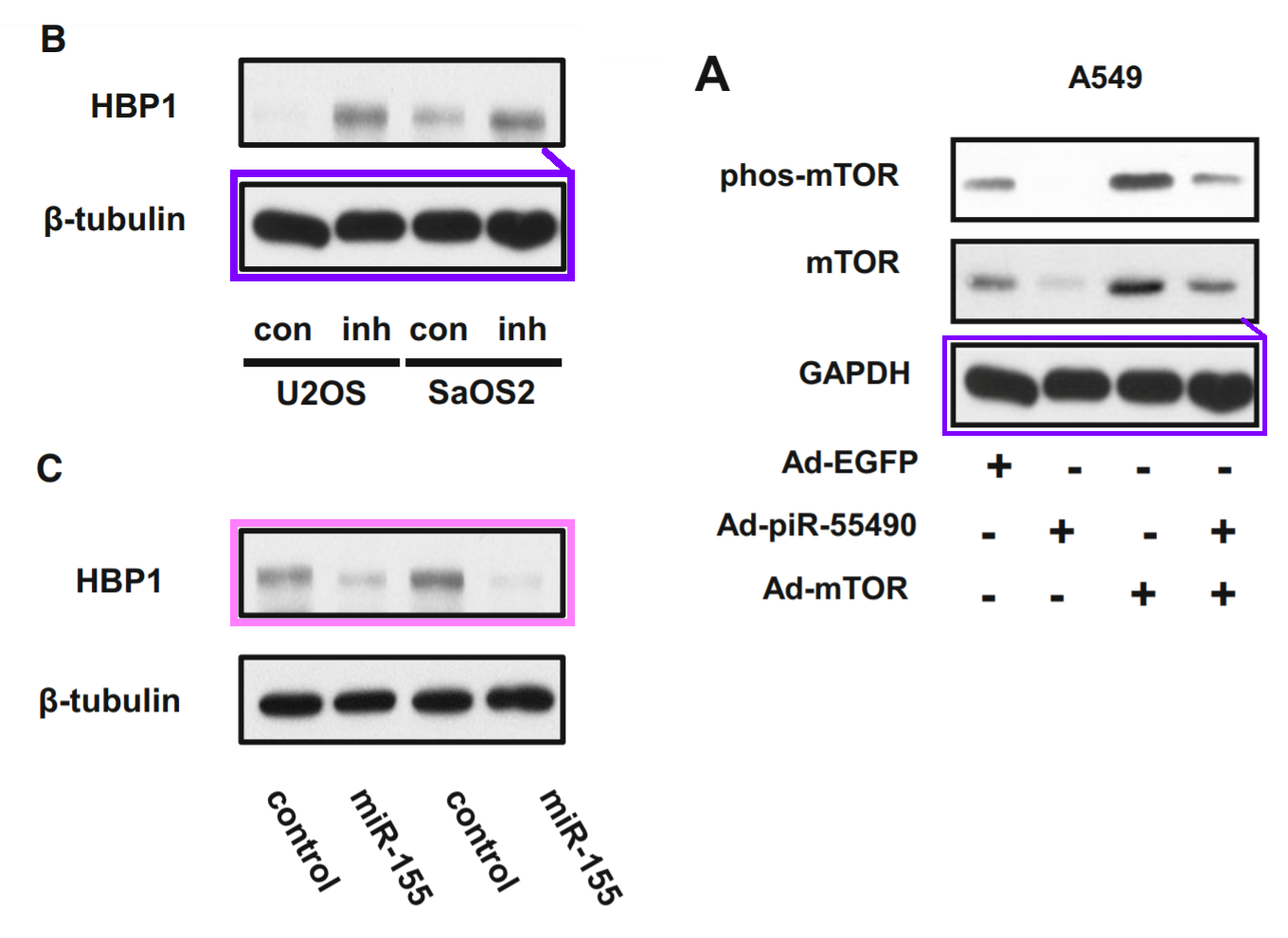
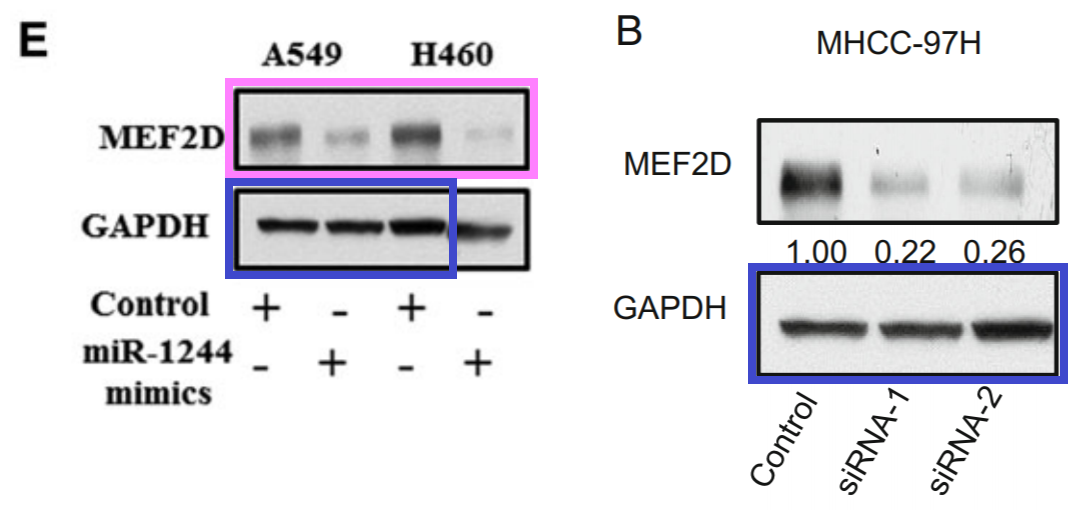
Nothing happened since to that utterly fabricated FEBS Letters paper, not even an expression of concern. Nobody from the editorial office ever replied to my emails, even when I asked them to deny they decided not to act on that blatant forgery. Guess FEBS Letters doesn’t negotiate with terrorists. The war against papermills will be fought on publishers’ own terms, with consideration to academic hierarchies and their business models.
An unwelcome interview
Later on, another peer-reviewed authority, the journal Naunyn-Schmiedeberg’s Archives of Pharmacology (NSAP), issued by yet another German learned society and published by Springer Nature, arrived with more paper mill heroes.
That was because they recently retracted a number of papermill products flagged by Smut Clyde and Tiger BB8. In an editorial (Seifert 2021), the journal’s Editor-in-Chief did reference a papermill article my site, but not the article where his journal featured:
“Two recent excellent papers have summarized several major (sad) features of paper mills (Byrne and Christopher 2020; Miyakawa 2020). Various science blog sites discuss in detail the background and commercial motivations of paper mills (see, e.g., https://forbetterscience.com/2020/01/24/the-full-service-paper-mill-and-its-chinese-customers/).
Unfortunately, Naunyn-Schmiedeberg’s Archives of Pharmacology became a victim of paper mills. The Editor-in-Chief was alerted of the problem by science blog sites in February 2020 and responded immediately…”
The reader never learns what those “science blog sites” were who contacted him by email, in German even. Can you guess?
Later on, the journal published this peer reviewed study on how to spot fake papers:
Marcel A. G. van der Heyden, The 1-h fraud detection challenge Naunyn-Schmiedeberg’s Archives of Pharmacology (2021) DOI 10.1007/s00210-021-02120-3
The author Marcel van der Heyden is associate professor of medicine at the UMC Utrecht, Netherlands. His article is a self-congratulatory piece, van der Heyden seems to be one of those academics who usurp research integrity topics to angle grants and peer-reviewed papers for their CV (apparently a popular scheme in the Netherlands, with Lex Bouter as the kingpin). The article drives you to believe that van der Heyden might be himself an image integrity sleuth who exposes data manipulations, just like Bik. Is he maybe even the pseudonymous Clare Francis? It is not verifiable of course, phony imposters are the crux of all masked superheroes.

There is a story connected to van der Heyden’s piece in NSAP.
In February 2021, the the Editor-in-Chief of NSAP, Roland Seifert, invited me to contribute an article on papermills. I proposed to make an interview with Smut Clyde and Tiger BB8, because I wanted these two of colleagues to get at least some of the credit they deserve, having done most of the work uncovering Chinese paper mills.
No such luck. After many weeks of being forgotten, editorially reviewed, sent back to me to be re-written and censored, Seifert and I eventually parted our ways because I refused to re-write the answers of my interview partners (a bizarre request to start with). I also refused to reference all those who mis-attributed Smut Clyde’s and Tiger BB8’s credit or even attributed it to themselves.
While my undesired interview was kicked around for many weeks, van der Heyden’s masterpiece passed editorial review in just one day. Why? Maybe it has the real peer-reviewed facts. In that world, Smut Clyde and Tiger BB8, or myself as publisher, were never really involved in the context of paper mills. There is a however one mention of For Better Science, Elisabeth Bik’s blog and Smut Clyde’s Riddled in the Table 2, the latter is described as “Post-publication peer review“, but that was added by Seifert, who explained to me: “Like in your case, I pre-reviewed his paper and asked for the inclusions of Tables 2 and 3.“
Best expert ever
Instead, as authoritative sources on paper mills referenced by van der Heyden are of course Byrne & Christopher, then other academics, Nature journalists, and brace yourself, the stalker looney Jaime A. Teixeira da Silva (JATdS), who publishes in predatory journals his paranoid brainfarts accusing everyone of everything. Precisely this scholarly study was cited:
Teixeira da Silva JA Paper mills and on-demand publishing: risks to the integrity of journal indexing and metrics. Med J Armed Forces India (2021) https://doi.org/10.1016/j.mjafi.2020.08.003
Note JATdS’ interesting choice of a journal (but then again, his propensity to publish with predatory outlets qualified him in 2020 as expert to warn in Times Higher Education about the dangers of predatory publishing, so what do I know).
As academic wisdom works, Jana Christopher referenced that exact same JATdS “paper” in her own FEBS letters editorial on paper mills Christopher 2021: “The raw truth about paper mills“. The raw truth namely is that Smut Clyde, Tiger BB8 or For Better Science never had anything to do with the mill investigations, but Christopher does of course reference those sources which attribute my colleagues’ work to her.
But why not quoting more JATdS masterpieces, dear Jana and Marcel, like this, this or this, or even better:

This is the kind and quality of academic expertise on papermills which the editor of Naunyn-Schmiedeberg’s Archives of Pharmacology categorically wanted me to add, most obviously to dilute the credit of Smut Clyde et al. I refused, so the interview with Smut Clyde and Tiger BB8 was published on my site instead. Seifert didn’t seem sad or disappointed, after all he got instead Professor van der Heyden, who “authored more than 120 peer reviewed papers“!
This practice of thanking Byrne & Christopher for the work done by Smut Clyde et al has already evolved into a honed scientific convention, a classic Matthew Effect. Like, who really said this, officially attributed to Jesus:
“For to every one who has will more be given, and he will have abundance; but from him who has not, even what he has will be taken away.“
The Third Party
Another academic editor, the German professor Christian Behl, issued an editorial on the occasion of another set of mass-retractions in his Journal of Cellular Biochemistry, another journal run by German academic editors and published by Wiley.
The retracted papers were all from Chinese papermills, analysed primarily by Smut Clyde and Tiger BB8 and published on my site. I exchanged many emails with the journal’s editors (not Behl though) in early 2020, always sharing the newest finds by Smut Clyde et al. My colleagues wrote to this journal also.
In some of that journal’s retraction notices, the Chinese authors are credited with voluntarily requesting retractions, other notices mention:
“The retraction has been agreed following an investigation based on allegations raised by a third party.”
Who might those third parties be, an uninitiated reader might wonder. At least now, the new Editor-in-Chief Behl gave a clue, by referencing in the good academic tradition Byrne & Christopher alone, neither of whom had anything to do with any of the retracted papers. The only other acknowledged source was Nature, simply because it’s Nature (also Seifert wanted me to quote it). Behl refused to comment on this interesting choice of references and left my email unanswered.
But in this tweet, Byrne seems to take issue with a tweet David Sanders (a real research integrity sleuth who was sued by Carlo Croce) who did ask for due credit:

In a tweet, Byrne ordered Sanders to “celebrate” the journal which took away Smut Clyde’s credit and gave it to her.
Dr Smith’s discovery
And now, an academic editor of yet another society journal decided to go one step further. Heather Smith, medicine professor at Midwestern University in Arizona and the new editor-in-chief of the society journal Anatomical Record, was portrayed by Retraction Watch on the occasion of another set of mass retractions, where she attributed the credit all to herself and her editorial colleagues. Never mind those same mill products were listed by Smut Clyde in public domain since February 2020.
This is what Retraction Watch wrote:
“Heather Smith, the editor-in-chief of the journal — an official publication of the American Association for Anatomy — said the newest retractions arose from an inquiry she launched after taking over the editorship in January 2021. She credited one of her associate editors, Julian Guttman, a cell biologist at Simon Fraser University in Canada, with helping her identify the suspect papers, saying “he has become our go-to person” for articles in that field.
In January, Guttman found an article the journal had published that showed signs of having been milled but was not among the batch retracted in 2020. That discovery prompted Smith and her team to look at every article the journal published since 2017 for red flags — questionable images and figures; titles with tip-offs (“molecule x does something clinically relevant via a pathway or process”) that, at least in her journal, are a common trope for milled papers; groups from China with minimal academic qualifications:
“In most cases the authors on these papers are not primarily scientists. A lot are students, medical students, clinicians — someone who needs a publication for a promotion. On ORCID they often have a shell profile if anything at all.“
They also used PubPeer and Elisabeth Bik’s blog as resources to see if anyone else had noticed issues with papers in the journal.
The result: 13 more articles that appeared to be unreliable.”
Thing is, Bik never blogged about any papers in Anatomical Record. More importantly, these 13 papers were always nicely listed in Smut Clyde’s public Google Sheets file, linked in his article from February 2020:
How probable is it that Dr Smith never downloaded this file?
Even Retraction Watch knows where this specific papermill and those specific Anatomical Record papers were originally reported:
” The Anatomical Record is correcting itself in a big way, pulling 13 articles, including several linked to paper mills. “
The link goes to Smut Clyde’s copy of his post, which he later republished on his own blog, Riddled. Why Retraction Watch never mentions me and my site, even when using my material, up to forbidding their readers to do so in the comment section, is a long story. But it may be due to the same kind of antipathy which prompted Smith and her editor peers to claim credit for the work of Smut Clyde et al.
So I wrote to Smith, in cc the leadership of the American Association for Anatomy and Wiley, who jointly publish this journal. Smith replied:
“First, we certainly never said that we were the first people to discover the existence of paper mills. I became Editor-in-Chief in 2021 after the height of the paper mills, so I personally learned about them by reading Dr. Bik’s blog and through conversations with colleagues.
The article on Retraction Watch is of course the abbreviated version of the full story that I told the Retraction Watch interviewer. The full version is that in spring of 2020, a concerned citizen scientist approached the former Editor-in-Chief (EiC) with concerns about a few papers in our journal. The EiC investigated and the result was 8 retractions in mid 2020. In January 2021, we discovered another paper. We did indeed conduct our own investigation, going back through our published papers to look for more instances of these patterns. We did use PubPeer as a resource to help us identify specific papers with data integrity issues—I’m not sure why that is difficult to believe. PubPeer is a great example of the scientific community coming together to help identify instances of fraud so that they can be corrected. The results of the process was an additional 13 papers in our journal that needed to be retracted.
Long story short, we investigated our published papers and then retracted those with data integrity issues. That is it. Again, we never said that we were the first people to discover the existence of paper mill papers. There are numerous available resources on the subject now.
Beyond that, The Anatomical Record will not be communicating further on this matter. Thank you.”
So much to take apart. First, notice that Smith inadvertently “misunderstood” my email and denies to have ever claimed to have discovered the general concept of paper mills, as opposed to her actual claim of having discovered those 13 specific papermill products in the Anatomical Record. That is a bit childish, but whatever. Also, it is unlikely Dr Smith searched PubPeer, because the function to search by journal is paid subscription-only, and nobody ever replied when asked if Smith’s journal bought this PubPeer subscription.
But who might that mysterious “concerned citizen scientist” be Dr Smith spoke about? I asked my colleagues, those who investigate papermills and who post on PubPeer, and none of them ever wrote to this journal. Which leaves us with two explanations:
- An unknown reader of my site informed the journal. In that case, the reader would have most certainly provided a link to Smut Clyde’s article or at least the links to his papermill files, listing those same papers Smith claims to have discovered all by herself, together with her editorial colleagues.
- The “concerned citizen scientist” never existed.
Those made-up concerned readers are not even Smith’s original invention. For example, the Greek for-profit publisher Spandidos, when retracting papermill forgeries exposed by Smut Clyde, beings the retraction notices with:
“Following the publication of this paper, it was drawn to the Editors’ attention by a concerned reader…”
None of us ever wrote to that publisher of trash, its trash journals or its trashy owner, Demetrios Spandidos, why should we. But thank you, dear concerned readers of Spandidos, for reading For Better Science.
In my last email, I challenged Smith to deny that she knew of my site and Smut Clyde’s work. She remained silent, admittedly as she previously announced.
You may think this is outrageous, but this is exactly how academia has always worked. Steal credit from those you deem unworthy, because it’s your feudal right and because they can’t defend themselves anyway. Everyone of us failed scientists will have a story how some senior scientist took their or their friend’s research data, paper authorship or grant application and made it their own or gave it to someone “more worthy”. Heck, even Nobel Prizes are awarded in the same way. Why shouldn’t Dr Smith have credit for our work, who are we anyway, nobody in her circles will disapprove. If anything, they might tut about Smith failing to credit Byrne & Christopher.
Some of the material was previously published in various issues of Schneider Shorts, the Friday newsletter by For Better Science.
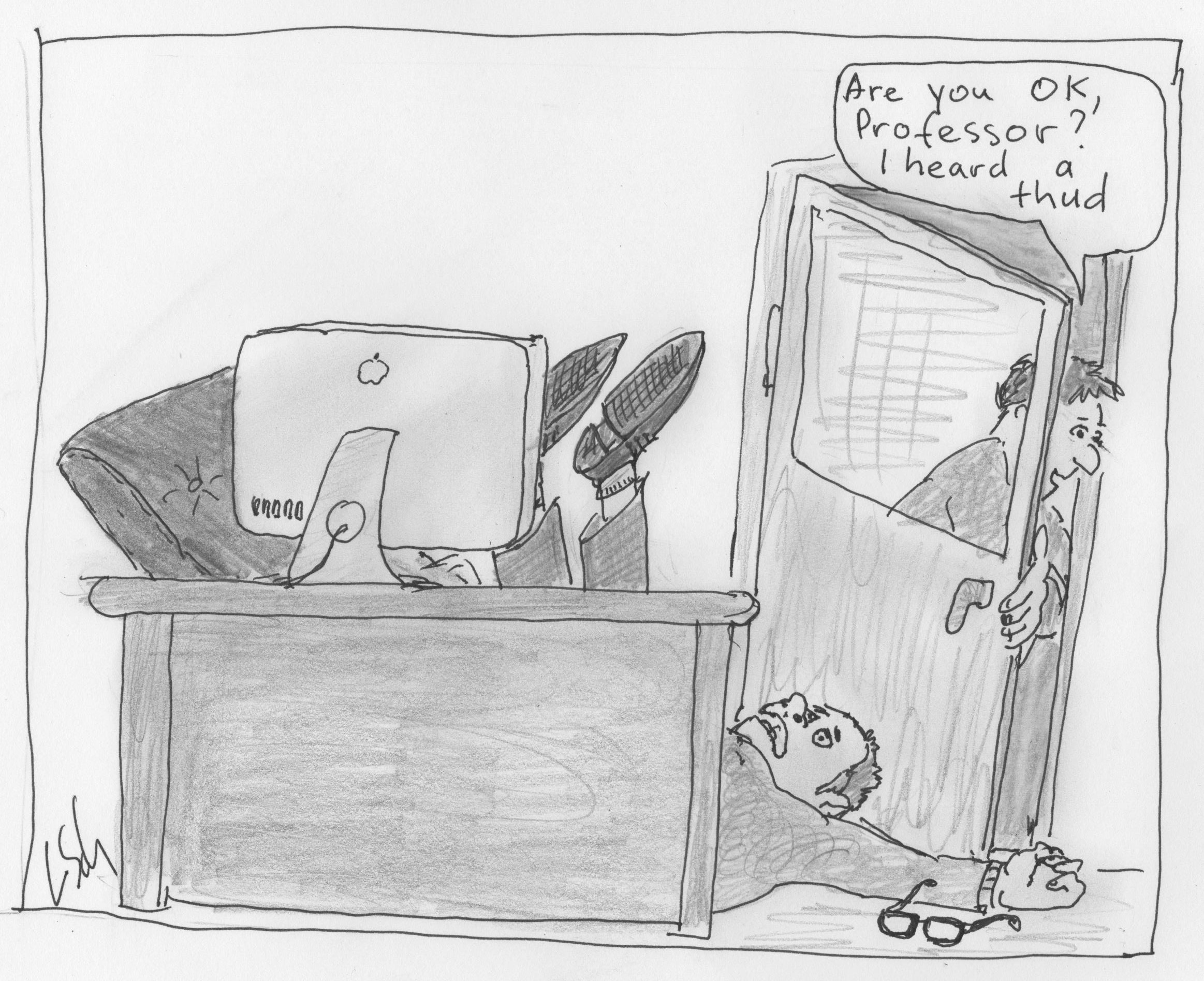
Get For Better Science delivered to your inbox.

Donate to Smut Clyde!
If you liked Smut Clyde’s work, you can leave here a small tip of 10 NZD (USD 7). Or several of small tips, just increase the amount as you like (2x=NZD 20; 5x=NZD 50). Your donation will go straight to Smut Clyde’s beer fund
NZ$10.00


Outrageous practice and exactly as you, Leonid, have described. It has become the norm in academia to steel somebody else’s credit and apportion it led by political reasons only. Disgusting.
I think if a journalist from non-academic big outlets, say BBC, could help exposing this malpractice, it could force those editors in chief to acknowledge the true heroes.
LikeLike
I have been plagiarised by proper journalists so often I stopped caring. But academics see themselves as morally superior.
LikeLike
“Outright theft among colleagues [mathematicians] has nearly become the general rule, and is in any case tolerated by all, even in the most obvious and iniquitous cases.” – Alexander Grothendieck, 1988.
LikeLike
Yes but you are a peasant while they are PROFESSORS. This means their information comes up with a premium/organic/fair trade tag.
LikeLike
Let’s see: we have less than a dozen “police officers” (Bik, Schneider and the gang ) to “patrol” a population that grows by more than million every year ( indexed papers).
https://www.smithsonianmag.com/smart-news/half-academic-studies-are-never-read-more-three-people-180950222/
The policing should be done by journals, instead they need policing too. The NIH and equivalent organizations could save billions of taxpayer money by investing a few millions by recruiting and expanding the above “gang”?
LikeLike
Indeed policing should be done by journals, unfortunately there will always be a conflict of interest if publishers just seek for mere profit.
It’s time to get familiar with names and faces of those people that keep an eye on money only:
https://group.springernature.com/de/group/about-us/executive-team
https://www.elsevier.com/about/management
LikeLike
and also:
https://www.wiley.com/en-us/leadership-team
https://craft.co/taylor-francis/executives
https://group.sagepub.com/people
LikeLike
Human Gene Therapy (published by Liebert) issued this retraction statement I wholly approve of.
https://www.liebertpub.com/doi/10.1089/hum.2018.212
LikeLike
Pingback: Longwei Yin corrections, or what’s the point anyway – For Better Science